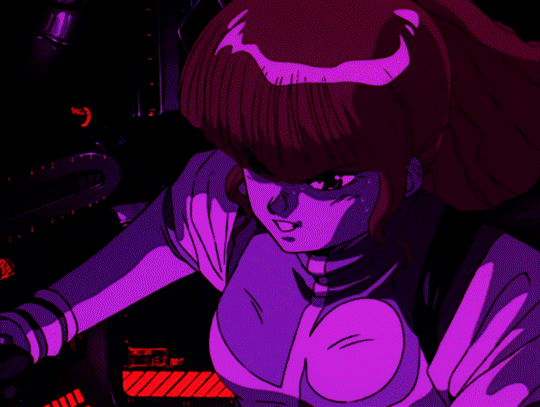#jung freud
Text



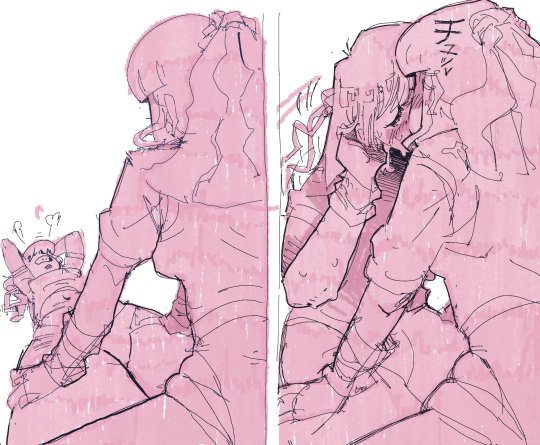
Saving Pride by feeding you the ship you've always been denied for 35 years
I need more ideas send me asks idk
488 notes
·
View notes
Text

運動するにゃ!
216 notes
·
View notes
Text
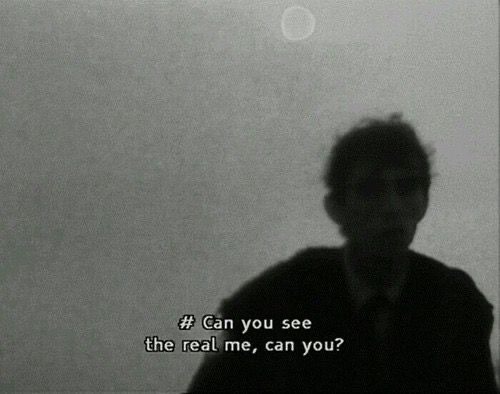
Carl Jung (1875-1961) considered psyche as a self-regulating system.
He wrote: "by psyche I understand the totality of all psychic processes, conscious as well as unconscious". The psyche strives to maintain a balance between opposing qualities while at the same time actively seeking its own development or as he called it - individuation.
Jung described psyche as a combination of a person's conscious and unconscious mind, mainly focusing on the 3 most important components: Ego, The personal unconscious and The collective unconscious.
Jung's philosophy about Personality is something I want to focus on this time. He distinguishes 2 main parts of an individual - Persona and Shadow.
Persona - is a part of the personality which comes into existence "for reasons of adaptation or personal convenience". The origin of the term comes from the mask worn by Greek actors in antiquity and denotes the part of the personality which we show to the world. The persona has been called "the packaging of the ego" or the ego’s public relations person, and is a necessary part of our everyday functioning. We might even say that our social success depends on having a reasonably well-functioning persona, one which is flexible enough to adapt to different situations, and which is a good reflection of the ego qualities which lie behind it.
Shadow - carries all the things we do not want to know about ourselves or do not like. The shadow is a complex in the personal unconscious with its roots in the collective unconscious and is the complex most easily accessible to the conscious mind. It often possesses qualities which are opposite from those in the persona, and therefore opposite from those of which we are conscious. The way in which we most immediately experience the shadow is as we project it on to other people, so that we can be fairly sure that traits which we cannot stand in other people really belong to ourselves and that we are trying to disown them.
So... let's take a moment and ask yourselves - how many people know "the real you"? who's familiar with your shadow - the darkest, the most gruesome and evil place of your mind? the part of yours you are trying so desperately to hide?
#writing#essay#thoughts#authors#literature#writers and poets#philosophy#carl jung#jung#shadow#my persona#persona#zigmund#sigmund freud#jung freud#consiousness#unconscious#personality types#animus#philosopher#small piece of mind#real me#fyp
20 notes
·
View notes
Text
SENTIMIENTOS NEGATIVOS EN EL PROPIO ANALISIS
Mucho que decir, o no, cuando el propio análisis te sacude. Es interesante que algo así ocurra, sino no sería psicoanalisis. El poder experimientar una cierta incomodidad o angustia es algo del proceso terpéutico y habla que el analista tocó efectivamente algo del paciente.
Si fuese que no sacudiría, no habría efecto, no habría algún cambio. Debe incomodar de vez en cuando y no está mal que algo de eso suceda. Ya que nosotros como pacientes tendemos a repetir en analisis lo que repetimos en nuestra propia vida, en la cotidianidad con nuestra pareja, nuestros hijos, nuestros amigos, nuestros padres, nuestras relaciones laborales, etc.
El analista aquí tiene que tocar algo ahí y no responder a la misma repeticion que sintomáticamente vuelve y revuelve siempre. Y ese aporte no va a ser sin angustia de parte del paciente porque efectivamente va a incomodar, y es una incomodidad que tiene encima el estatuto de ser sumamente vedado, es decir, uno se encuntra ciego completamente frente a esto, le es imposible verlo y si lo ve, no le deja aún de molestar esa intervención: Porque es ahí cuando el analista lo señala que lo ve, y como dice Lacan, el sujeto no quiere saber nada de su propia verdad, porque "la verdad es siempre subversiva". Esto a todos nos toma de sorpresa.
Por lo tanto creo que es interesante que cuando surgen sentimientos hostiles o negativos para con nuestro propio analista, a la vez que los pensamientos de dejar rapidamente la terapia, creo que es importante preguntarnos y ser lo mas objetivo posible, si es que efectivamente algo de nuestro propio síntoma, de nuestro propio cuentito que nos contamos y que queremos seguir contandonos, no se esta trabajando en el analisis y que el analista estaría tocando algo de esto. A la vez que quizás sería tambien frutcifero hablarlo con alguien que conozcamos y tambien este haciendo analisis.
No vamos a "curarnos" siguiendo protocolos o consejos. Vamos a cambiar algo de nuestra posición subjetiva pasando y dejando frente a nuestra mirada algo de la relacion tranferencial con nuestro analista.
#psychoanalysis#psicología#psychology#psicoanálisis#psicoanalista#literature#freud#sigmund freud#jung freud#philosophy#salud y vida#mente sana
5 notes
·
View notes
Video
youtube
REGRAS da CASA ,Como ENSINAR Seus FILHOS as REGRAS da CASA e RESPEITA_LAS
1 note
·
View note
Text
Punarvasu & Swati: Cosmogony, Reality & Consciousness
Punarvasu and Swati are deeply intertwined nakshatras with very similar patterns and themes. Punarvasu's deity Goddess Aditi embodies infinity and vast primordial space. She is boundless and limitless. Swati's deity Vayu is the ruler of air & wind and connected to the life force or prana (or qi).
Both these nakshatras connect to space, infinity, abundance and are known for being wealth giving nakshatras.
Ruth Handler, the inventor of Barbie had Swati Sun & Mercury along with Ketu in Punarvasu
Margot Robbie who played Barbie has Swati Moon & Punarvasu Rising
I had briefly mentioned this in my Tomie post but Swati & Punarvasu's themes are manifest in Barbie because Barbie is not a person, she is a type of doll, and she can be anyone or anything. Barbie is a whole universe into herself, this is the cosmic abundance and infinitude of Swati & Punarvasu.

My Tomie post also talks about how Tomie is a Punarvasu so do check that out!!
I have always thought that Punarvasu & Swati are related to time travel which makes sense provided the cosmic infinitude embodied in these naks.

Predestination, a time- travel movie starring Ethan Hawke who is Swati Sun (do watch it, its really good))

Bruce Willis has been in several time-travel movies, including 12 Monkeys & Looper. He has Jupiter in Punarvasu atmakaraka

The 1960 movie The Time Machine stars Rod Taylor who has Ketu in Swati.

The Terminator movies starring Arnold Schwarzenegger- Punarvasu stellium (mercury, venus & rising). Arnold like many Punarvasus have been in many sci-fi movies that concern the nature of reality, in fact his own autobiography is called Total Recall (he's been in a movie of the same name and its about what is real and what isn't- peak Punarvasu behaviour I must say)

Planet of the Apes stars Charlton Heston who has Punarvasu Moon, Swati Rising

Frequency stars Dennis Quaid who has Punarvasu Moon & Ketu
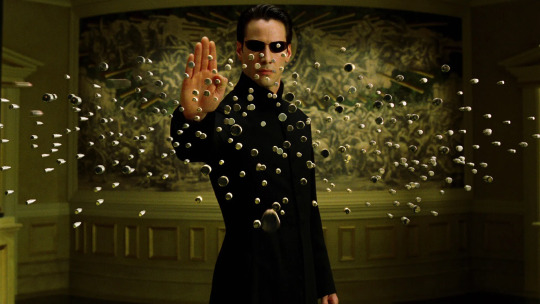
The Matrix/ The Lake House/Bill & Ted's Excellent Adventure are all time travel movies starring Keanu Reeves who is Punarvasu Moon.
Its interesting to me that many Punarvasus have often spoken about "creating your reality".
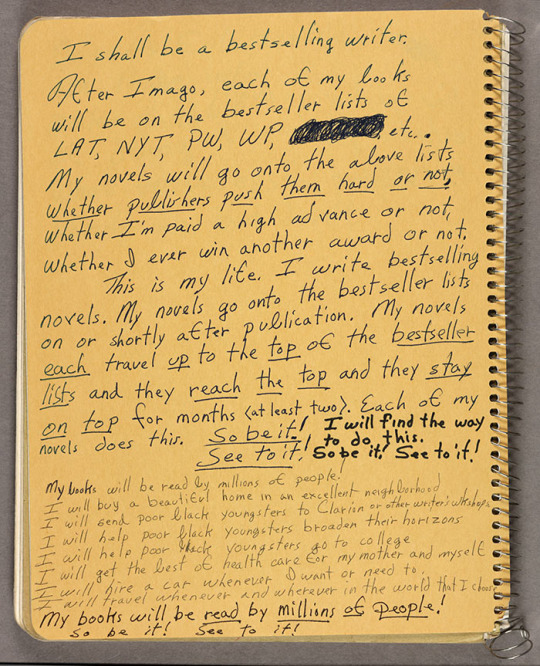
Octavia Butler, the writer has Punarvasu Rising (the themes of this nak is vv apparent in her work but I'll perhaps discuss that in a future post) and this^^ is a page from her journal that she wrote in the 1970s wayyy before manifestation was a "thing".
Butler grew up very poor in an era of racial segregation and suffered from dyslexia. She overcame great odds to become one of the best-selling sci-fi novelists of all time.

Miranda Kerr- Punarvasu Moon often talks about the power of our thoughts and has referenced writers like David R Hawkins (who talks about the nature of consciousness) a lot. Here's a quote from her book.
“Start each day by saying to yourself: ‘How amazing it is to be alive! What a wondrous feeling I have inside! I am awake, healthy and full of joy!’ Visualise every cell in your body being filled with vitality, health and love.”- Treasure Yourself
Miranda grew up quite lower middle class on a farm in rural Australia and then went on to become one of the best known models in the world and is now married to a billionaire.
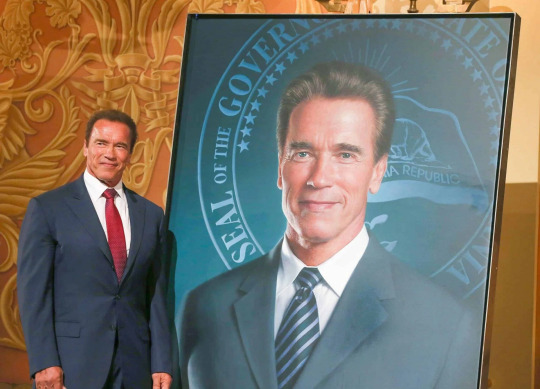
Arnold Schwarzenegger- Punarvasu Rising (and stellium)
If you've read his autobiography or watched his Netflix documentary yk that he talks constantly about the power of the mind, having focus etc
He grew up in a small town in Austria (after WW2) with an abusive father and also suffered from dyslexia. He then went on to become one of the biggest movie stars of all time and was the Governor of California???

Ariana Grande- Mercury in Punarvasu sings about manifestation and law of attraction quite a lot. She was a side character on a Nickelodeon show and 10yrs later she's one of the biggest pop- stars.

Nikola Tesla, Punarvasu Sun & Venus
Tesla discovered automatic current transmission & generation technology which is responsible for modern day wireless connections. He's also super Punarvasu core as a person, he had eidetic memory, apparently did not sleep more than 2 hours per night, was interested in Vedic cosmology & philosophy (he used terms like akasha & prana to describe the relationship between matter & energy). I find this quote by him very interesting, "To me, the universe is simply a great machine which never came into being and never will end". I personally don't believe in the Big Bang theory and I'm inclined to believe that the universe has always existed instead of having come into existence at one point, which imo, is a very anthropocentric idea. Tesla's quote is a reflection of the boundless nature of Aditi, who is the cosmic mother, she embodies creation.
fun fact: Elon Musk who named Tesla after him is Punarvasu Mercury & Rising.
Interestingly enough, several decades before the Big Bang theory gained mainstream acceptance and was studied by scientists, Edgar Allan Poe published a lecture/essay on the matter titled Eureka: A Prose Poem in 1848 (!!!!). He had Swati Rising
Can you believe that he, a man with zero scientific background essentially came up with ideas that would serve as the basis of 20th century scientific discoveries & theories??? That too in 1848???
Analysis of Eureka's scientific content shows congruities with modern cosmology, stemming from Poe's assumption of an evolving Universe and it also contains ideas about the unity of space and time, the mathematical equality of matter and energy, the velocity of light and a rudimentary concept of relativity, black holes (including one at the centre of our Milky Way), a "pulsating" universe that renews itself eternally, and other universes in other dimensions with different laws of nature.
A writer & poet who dropped out of college came up with all that in 1848. Swatis & Punarvasus have the ability to understand complex concepts, systems, and processes intuitively. This is why they are so good at analysis, strategy and planning. They have a futuristic vision because its easy for them to see how current events will affect other things and manifest in the future. Those who don't have these placements will struggle to understand what this is like because most of us aren't endowed with this sort of ability to see the trees and the forest all at once.
Interestingly, the scientist Georges Lemaître who first proposed the "Big Bang theory" of the origin of the universe, calling it the "hypothesis of the primaeval atom", and later calling it "the beginning of the world" is a Punarvasu Sun.
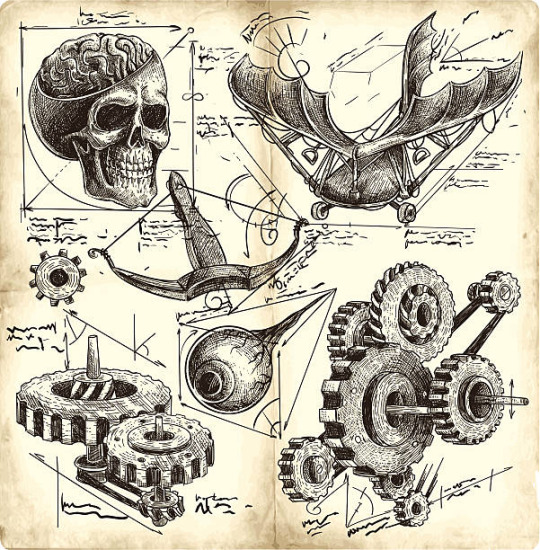
Leonardo da Vinci is known for his foresight and is considered a visionary. He, in the 15th & 16th centuries, pondered upon the possibilities of human flight and left behind diagrams and models of the helicopter, the parachute, the machine gun, the humanoid robot, the revolving bridge, the ideal city and much more. He had Ketu in Punarvasu.
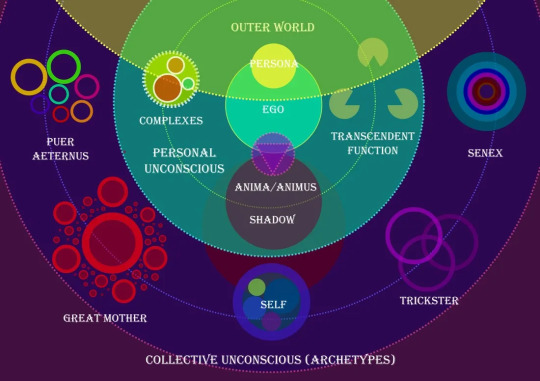
Carl Jung created some of the best-known psychological concepts, including synchronicity, archetypal phenomena, the collective unconscious, the psychological complex, and extraversion and introversion. He had Punarvasu Mercury & Venus and it explains why there was such a heavy emphasis on "darkness" vs "light" in his work (Punarvasu being "the return of the light").
He is the father of Analytical Psychology which seeks to "analyze the relationship between a person's individual consciousness and the deeper common structures which underlie them. Personal experiences both activate archetypes in the mind and give them meaning and substance for the individual. At the same time, archetypes covertly organize human experience and memory, their powerful effects becoming apparent only indirectly and in retrospect. Understanding the power of the collective unconscious can help an individual to navigate through life."
In fact, vedic astrology (Jung did use astrology as well btw) serves as a very interesting way to explore the collective unconscious and the many archetypes that are manifest in individuals possessing them.
I will make a post in the future comparing Freud & Jung and how their different astrological placements contributed to their similar but differing views.
George Orwell, who was a fierce critic of totalitarianism had Swati Rising, if you read his works, you can see how he's able to analyse the effects and consequences of the same, especially 1984 which was sooo ahead of its time in the sense that much of what was written in the book is eerily similar to what's going on in the world right now. The novel examines the role of truth and facts within societies and how they can be manipulated.
Swatis & Punarvasus are super Futuristic, as individuals or visionaries as well as in their art & work. They dominate in the surreal/scifi genre.
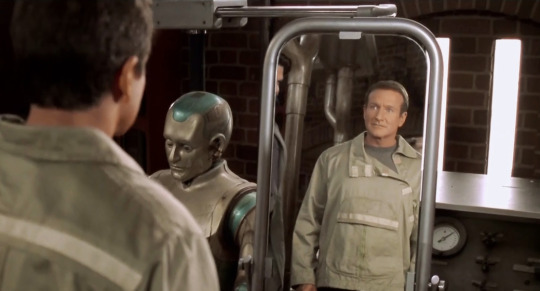
Robin Williams- Swati Rising stars as an android in Bicentennial Man which is a movie about a robot who learns how to be human. Transcending humanity is a big theme in the works of Swati natives.
On this note, I have noticed several Swati & Punarvasu natives star in movies featuring/about cloning 👀 This does not surprise me as I had already mentioned this in my Tomie post but it is fascinating how Swati & Punarvasu's ability to be many many versions of themselves is made manifest in this trope of clones.
I have to mention how both Rahu & Jupiter have a very boundless, obese energy that is hard to contain. This can be manifest negatively because its very easy for energy of this proportion to be misused and misdirected but when they're harnessed positively, these individuals are capable of envisioning change that have few/no other parallels.
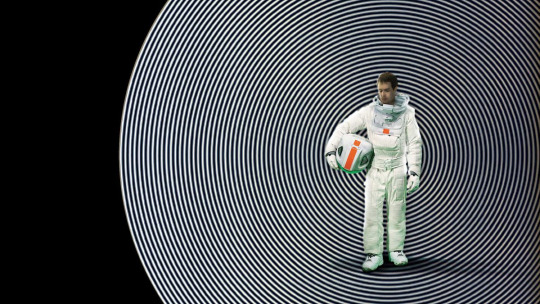
Moon (2009) is a movie that features the main character and his clones. Sam Rockwell, Swati Sun plays the main character.
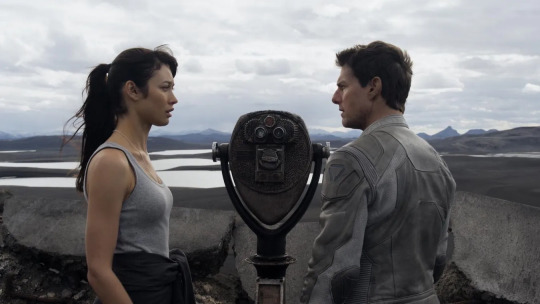
Tom Cruise, Punarvasu moon (acc to Claire Nakti) stars in Oblivion and plays a clone of himself. One version of him is good, his "clone" is evil. The battle between good & evil within oneself is a VERY Jupiterian trope (and I shall make a post solely about that in the near future).
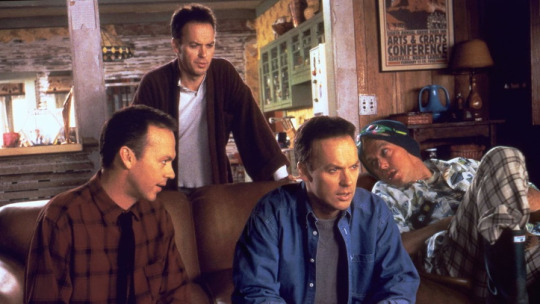
Multiplicity is a 90s scifi-comedy about a guy who clones himself so that he can do all the things he wants to do. Michael Keaton who plays the protagonist has Swati Moon
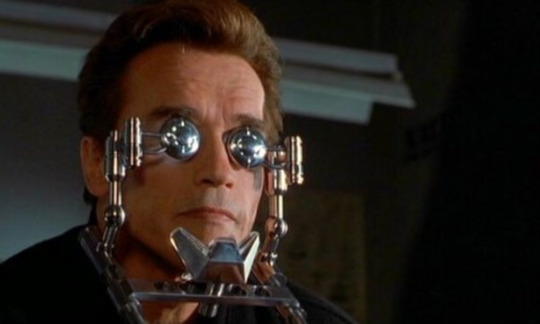
The Sixth Day is a movie starring Arnold Schwarzenegger (Punarvasu stellium) and it is about cloning. The title is a reference to the Abrahamic Genesis concept of how God created mankind on the sixth day.
This in itself is very interesting because Punarvasu is the 7th nakshatra and in the Bible, it is said "And on the seventh day God finished the work that he had done, and he rested on the seventh day from all his work that he had done. So God blessed the seventh day and made it holy because on it God rested from all the work that he had done in creation."
7 is a number that has profound spiritual meaning and is present in many religions as a figure of significance. From this verse taken from the Book of Genesis, it is interesting to note that ""7" is the culmination of creation. It is the day on which God rested because he had already created. It is not nothingness, it is the day on which everything already existed. This is a significant Punarvasu theme.
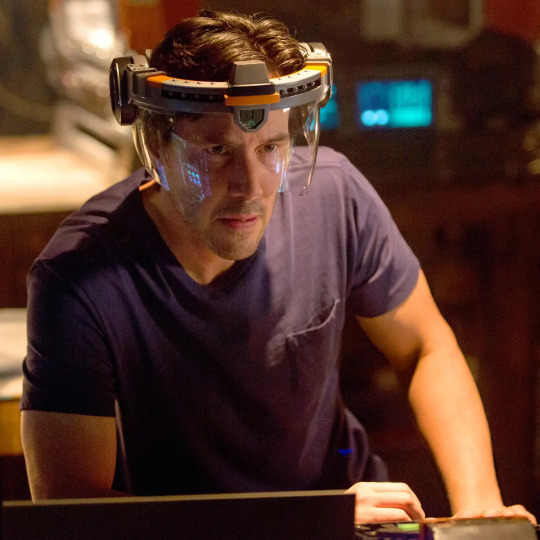
Replicas stars Keanu Reeves (Punarvasu Moon) as a neuroscientist who tries to revive his deceased family members by cloning them.
Its interesting how in these films, natives appear either as a clone or as the ones who do the cloning, furthermore connecting it back to Punarvasu's creation trope.
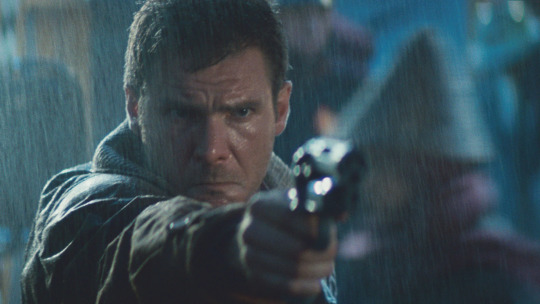
Harrison Ford, Punarvasu sun & moon stars as in and as the Blade Runner (1982) where he must "pursue and terminate four replicants who stole a ship in space and have returned to Earth to find their creator."
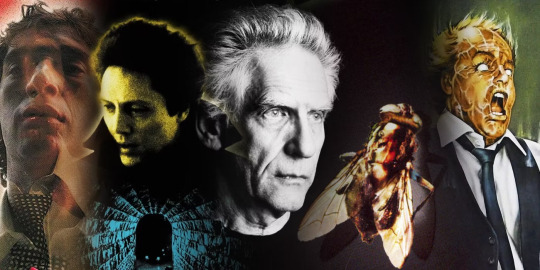
David Cronenberg is a director best known for making really weird, surreal, futuristic movies that heavily feature themes related to the nature of reality, consciousness etc
He is a Punarvasu Moon & Jupiter
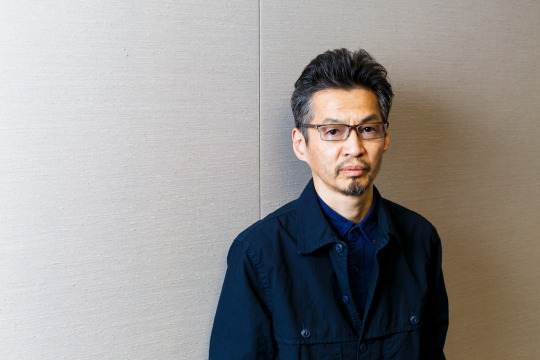
Gakuryu Ishii, Punarvasu Moon is another filmmaker who makes movies that heavily centre around truth, reality, consciousness, the future etc.
I recommend his movie Mirrored Mind which heavily deals with identity, consciousness etc (its vaguely reminiscent of Perfect Blue)
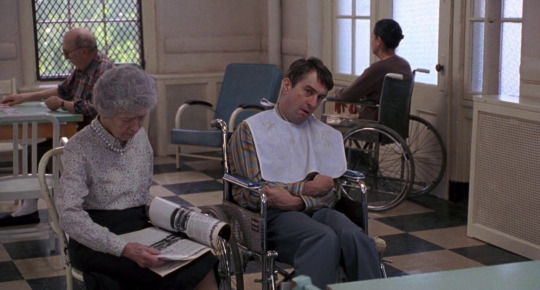
Robert de Niro Punarvasu Rising, stars in the movie Awakenings (based on a true story) as a catatonic patient who has an "awakening" before tragically going back into catatonia, Robin Williams, Swati Rising stars as the doctor who administers a drug that induces this awakening.
In Vedic philosophy, there are 3 gunas, Rajas, Tamas & Sattva.
Tamas is a state of darkness, inertia, inactivity,
Rajas is a state of energy, action, change, and movement.
Sattva is a state of harmony, balance, joy, and intelligence.
Punarvasu belongs to the Rajas guna whereas Swati belongs to Tamas guna.
Tamas can be described as a state of statis or stagnation as there is no transformation and thus no change. Punarvasu natives are prone to passivity and it is only when they face their own destructive shadow, do they emerge out of passivity to their natural state of Rajas. In this movie, Deniro's experience where he emerges from his catatonia with a desire for freedom and to live life to the fullest before eventually accepting the fact that his condition cannot be remedied inspires the Doctor played by Robin Williams to emerge out of his own shell and live life more fully.
Punarvasus are often restricted by situations beyond their control yet they are possessed by a yearning to live life to the fullest. Swatis often have unmeasured freedom and do not know how to utilize it, they are restricted by their own character.
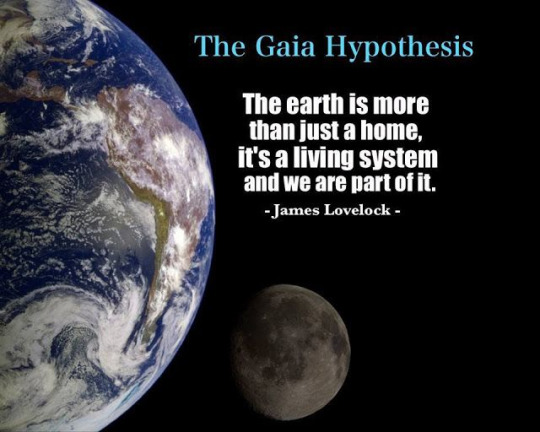
The Gaia Hypothesis proposed by James Lovelock (1972) suggests that living organisms on the planet interact with their surrounding inorganic environment to form a synergetic and self-regulating system that created, and now maintains, the climate and biochemical conditions that make life on Earth possible.
It is a holistic view, which is generally not appreciated in science that likes to favour randomness, chance or whatever instead of the innate harmony and union behind creation.
James Lovelock has Punarvasu moon & Swati rising
Lynn Margulis who co-developed this theory with him most likely has Revati Moon and I will be exploring her symbiotic view of evolution on a different post as it goes beyond the scope of this one.
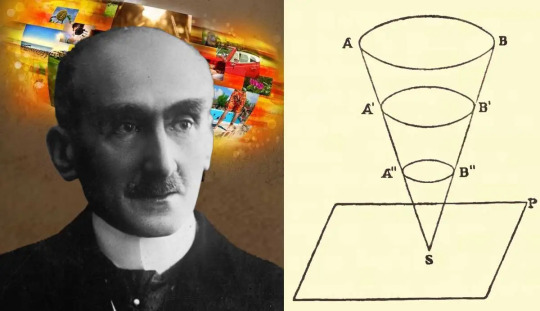
Edit: as @brundlefly333 pointed out, the French philosopher Henri Bergson (Punarvasu Moon) has a book called Creative Evolution which extrapolates that whilst "evolution of species can come from external factors "like natural selection", it most importantly (comes) from an internal impulse (a creative force). This creative force is inherently unpredictable and non-linear, leading to the emergence of novelty and complexity in living organisms over time.
I find his "Cone of Memory" (depicted above) hypothesis very fascinating.
The Cone of Memory model can be imagined as an inverted cone, with the apex representing the present moment, the base symbolizing the entirety of one’s past experiences, and the cone’s vertical axis signifying the flow of time. As the present moment progresses, the apex of the cone moves upward along the axis, continuously stretching the cone outward as it incorporates new experiences and memories into a person’s consciousness. The memories from our past experiences are layered into the cone, with the most recent memories residing closer to the apex and older memories located further down, towards the base.
Bergson’s model emphasizes the active role of individual perception, memory, and experience in shaping one’s consciousness. The human mind, as depicted by Bergson, interacts with the objective world while drawing from its accumulated memories to create individual experiences in real time. The Cone of Memory focuses on the dynamic interplay between perception, memory, and experience, hoping to account for the generation of novel understandings and interpretations of reality.
Bergson’s emphasis on experience at the personal level also has significant implications for how we understand the self. In his view, the self is not a static entity but rather a constantly developing process, shaped by the dynamic interplay of perception, memory, and experience. This more fluid conception of the self contrasts sharply with many traditional notions of a fixed, unchanging identity. It also invites us to recognize the transformative power of our own experiences and encounters in the continuous interweaving of the past and present in our temporal consciousness.
It can be summed up with this quote:
"To exist is to change, to change is to mature, to mature is to go on creating oneself endlessly"- Henri Bergson

Rudolf Steiner- Ketu in Punarvasu, Swati rising
Steiner's breadth of work encompasses many fields, he pioneered modern-day organic farming, anthroposophical medicine (what we call alternate medicine including homeopathy, massages and frequency work etc rooted in the human body's ability to heal itself) invented the Waldorf education system (alternative schooling) and tried to merge science and spirituality.
All of this is vvv Punarvasu & Swati coded because its these natives who are frequently drawn to non-traditional systems of thought & experience and also merging a vast variety of techniques + being well versed in a lot of different fields etc comes down to having the inner space to hold all of it. This is literally not something most other people can do. Pursuit of knowledge can easily drain/deplete people but Punarvasu & Swati natives have a boundless thirst for knowledge and innately understand the profound truth that everything is connected.
Symbiosis, synergy, syncretism etc are all themes prominent in the works of Swati & Punarvasu natives who tend to view things as a coherent whole and not separate from one another; everything in creation exists to serve one another and exist in perfect harmony. Its not by "accident" that human beings took shape on earth where all the elements exist to continually support human life, every tiny detail is manifest in divine perfection and it helps us understand that we are a part of a larger system and that what we do affects changes at both the micro and macro level.
"Synergetics is the empirical study of systems in transformation, with an emphasis on whole system behaviours unpredicted by the behaviour of any components in isolation. R. Buckminster Fuller (1895–1983) named and pioneered the field. His two-volume work Synergetics: Explorations in the Geometry of Thinking."
Buckminster Fuller had Punarvasu sun & jupiter
I think I had made a post about how Punarvasu natives tend to make geometric art that features repetitive patterns and motifs. I thought Fuller's use of the term "Geometry of Thinking" was very Punarvasu of him.
Pls look him up and his work, its very interesting and if you have Punarvasu placements you might find things you resonate with. I dont want to make this post any longer so I'm not including more of his work although all of it really fits with the theme tbh.
Amartya Sen, the Indian economist and philosopher has Swati Sun, he is best known for his contributions to welfare economics, social choice theory, and development economics. His work incorporates the same holistic view of how everything exists in close interaction with everything else, interconnectedness as well as an all encompassing-ness are themes that dominate his work. Society affects the market, the market affects society, all of this affects interpersonal relationships, it takes a Swati/Punarvasu native to deeply embody this sentiment in their thought/work.

George Harrison aka the Spiritual Beatle had Swati moon, Jupiter in punarvasu amatyakaraka.
"It's being here now that's important. There's no past and there's no future. Time is a very misleading thing. All there is ever, is the now. We can gain experience from the past, but we can't relive it; and we can hope for the future, but we don't know if there is one."
This quote by him really sums it up.

Robert A Heinlein had Punarvasu sun, jupiter and rahu
Heinlein used his science fiction as a way to explore provocative social and political ideas and to speculate how progress in science and engineering might shape the future of politics, race, religion, and sex. Within the framework of his science-fiction stories, Heinlein repeatedly addressed certain social themes: the importance of individual liberty and self-reliance, the nature of sexual relationships, the obligation individuals owe to their societies, the influence of organized religion on culture and government, and the tendency of society to repress nonconformist thought. He also speculated on the influence of space travel on human cultural practices.
This is yet another example of the interconnectedness of Punarvasu as well as the analytical nature of these natives.
I will end this post here because I've been rambling for too long but I hope this was informative!! Apologies that this was kinda science heavy and not very pop culture centric :/
#vedic astro notes#astrology observations#sidereal astrology#vedic astrology#nakshatras#astrology#astro notes#astro observations#astrology notes#astroblr#Punarvasu#swati#Jupiter#rahu#carl jung#Freud
245 notes
·
View notes
Text
sevdiğini ilan etmek, eksik olduğunu, iğdiş edildiğini ilan etmektir. sevmek sahip olmadığınız bir şeyi vermektir.
bruce fink - lacan'da aşk
#kitap#edebiyat#blogger#felsefe#kitaplar#blog#kitap kurdu#charles bukowski#friedrich nietzsche#psikanaliz#jacques lacan#lacan'da aşk#lacancı özne#aşk#simone de beauvoir#love letters#sigmund freud#carl jung#psikolojide tipler#marcel proust#oscar wilde#kitap okumak#julia kristeva#serol teber#alfred adler#jean baudrillard#alain de botton#platon
34 notes
·
View notes
Text
There's a scene in the first season of Babylon Berlin where a characters reads a lecture on psychoanalysis and PTSD (the series are set sometime between the two world wars) and the audience boos him.
"Brain is an organ, not a poetry book," they say.
For me it put into perspective how important was what Freud did. Considering the setting he had to work in, the setting he had to overcome in his own mind first, we really don't value the guy enough.
Not like I didn't *know* it, but it helped immensely to see it in context.
He was the first who said that humans have an inner life that's neither sacred nor purely physical. That it's governed by its own predictable rules and breaks in predictable ways, and that it can be mended through talking. Not being electrocuted or medicated out of the patient.
Just how awesome is that. Just how much inner work that required in his times.
#one thing that gets me when I try to read him#is his stance on ethics in therapy#he wrote about how tempting the position of being an expert on living was for the analyst#how it should be avoided not only in outward actions#but even as a passing thought#because the analysant will feel it if it's there#and it will stop them from moving where they really need to be#I see very few modern therapists who truly avoid that position#or truly understand the gravity of it#also unlike jung the guy never slept with his patients#ethical committees weren't even around at that time#no one would have stopped him#and yet he didn't#his ideas may be outdated#but we seriously underestimate freud as a person and as a scientist
48 notes
·
View notes
Text
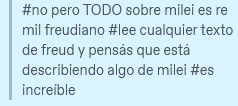
He aquí la cuestión: Milei es una prueba de que el psiconanálisis no estaba errado después de todo, o es tal vez una manifestación que solamente pudo originarse en el país que es el último bastión del psicoanálisis?
#siempre digo porque nos toca el psicoanálisis choto de freud y no el copado de jung con alquimia#cosas mias
37 notes
·
View notes
Text
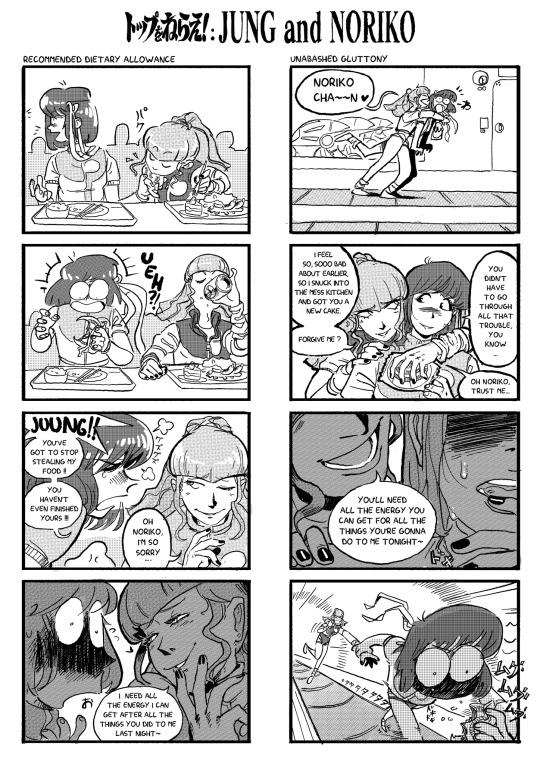
223 notes
·
View notes
Text





instagram
Smile 🧡☺️📻
#smile#austria#vienna#classical#museum#freud#sigmund freud#jung#klimt#gustav klimt#gloriette#baroque#rococo#mariatheresia#yellow#portrait#photo#europa#house of habsburg#schönbrunnpalace#belvedere palace#musikverein#royal palace#music#medieval#singer#japan#artwork#artist#happy
18 notes
·
View notes
Text
I knew Karl Jung and Sigmund Freud separately, but today, I learned that they "talked for 13 hours straight" sometimes and I found that puzzling because they have vastly different ideas, with Sigmund being on the chaotic sides of psychology.
And I was like, "Hold on, that sounds familiar..." (Remembering my baeyani tatays) and so I went to google quick and found this link at front
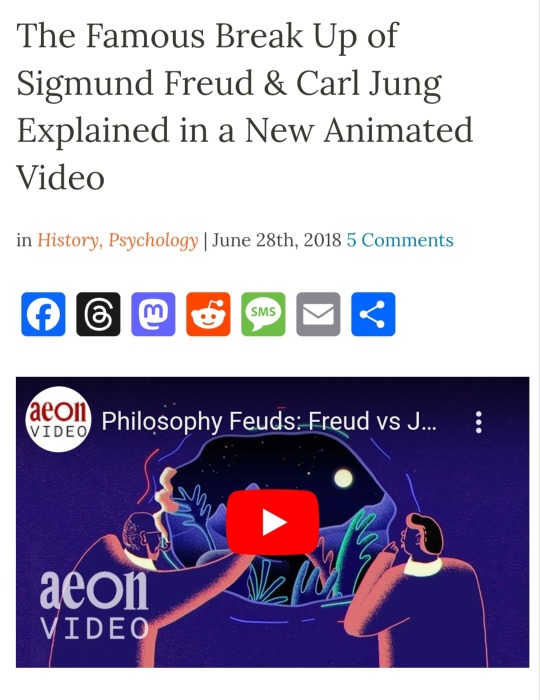
Which made me laugh out loud for the first time this year.
At some point in history, in any field, in any era, two men will get close due to similar interests or political sides, then will "break-up" due to one of them falling down to some form of irrationality. It's somehow a form of entertainment to me.
22 notes
·
View notes
Text
Twisted Thoughts: Silver’s UM
One may think that Silver’s UM is weak and even useless, mainly because what we used to call “strong” often has something to do with physical damage.
However, many would agree that it’s not about what tools or abilities you possess but how you use them. Any tool can be a deadly tool. Any knowledge or skill can make you dangerous and powerful. Question is, whether you realise the full potential of your “weapon” or not.
The best example would be Jade. And I think it’s been discussed a lot how smartly he utilise his ridiculously impractical UM. So back to Silver.
Won’t go deep into descriptions. Basically, Silver’s UM is dreamwalking, visiting dreams of other people (and animals?? just joking). That’s it. That’s the UM.
It can’t be used in a battle, it can’t protect, it can’t hurt, unless…?
Mind control. Driving someone mad. Pushing them to a dangerous point. Haunting them in their dreams every night. Making them see nightmares. Making them regret waking up or making them scared of going to sleep. Exhausting them so they know no rest. So they can’t differentiate between dreams and reality. Make them loose their mind.
Physical abuse isn’t the most dangerous thing. Mental torture can be far more painful sometimes.
We’re lucky that Silver is a good boy. Having someone getting into your subconscious with ill intent can bring some really dreadful consequences.
P. S.
Naturally, I cannot help but mention The Inception - the film I had in mind writing this. So, some quotes from there:
“In the dream state, your conscious defenses are lowered, and it makes your thoughts vulnerable to theft.”
“What is the most resilient parasite? Bacteria? A virus? An intestinal worm? An idea. Resilient, highly contagious. Once an idea has taken hold of the brain it’s almost impossible to eradicate. An idea that is fully formed—fully understood—that sticks; right in there somewhere.”
#won’t mention Jung or Freud#because it’ll be at least 10 pages#but you got the idea#anyway the usual 2 am activity#I’m so sleepy but can’t sleep#sorry for the mistakes#twisted wonderland#twisted thoughts#twst silver#twst spoilers#twst episode 7 spoilers#twst chapter 7 spoilers
62 notes
·
View notes
Text
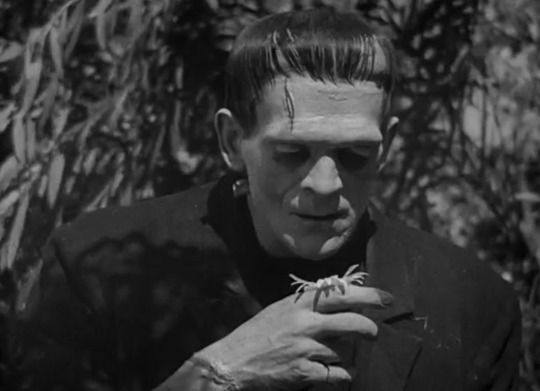
Frankenstein’s monster – the wounded inner-child as saboteur
I had read almost the entirety of the novel, frustrated by the lack of material to psychoanalyse, until – in a moment of eureka - it suddenly dawned upon me; Frankenstein’s monster is merely a split part of his psyche which he is in conflict with and cannot seem to integrate. The monster is a product of Frankenstein’s vivid imagination, but ultimately an integral part of himself.
From the mysterious appearances of the monster, to the fact that few lived to tell about his existence and his endless yearning to fulfil his need for companionship leading to a desperate series of wicked and vengeful sabotage – I reread the novel through my freshly acquired lens and it all made perfect sense. Therefore, one should read the following psychoanalysis of the novel with the above principle in mind: monster as split part of Victor Frankenstein’s psyche.
Part 1: Puer Auternus – inflated by the psychic forces of the unconscious
With ardent zeal Victor Frankenstein enters university at Inglostadt, embodying the Puer archetype possessed by a naiveté which resembles the folly of a delinquent child. Upon his arrival, he dialogues with professor Krempe and with a hint of arrogant contempt tinting his words, he proudly announces his familiarity with the works of Paracelsus and Agrippa. Krempe, flabbergasted in return, gasps and wastes no time to enlighten Victor that his undertakings have been a waste of time. An oedipal drama between a prideful Puer and an ossified Senex plays itself out in their disagreeable interaction charged with foul contempt.
The birth of paradigm shattering inventions happen when a Puer Auternus on the loose commences himself with sedulous passion to his fresh, imaginative but also rather folly ideas. Indeed, the Senex, with his dry, dogmatic orthodoxy, is never the carrier of new, eccentric invention that defy the laws of nature and require a reconsideration of the established models of reality.
For a genius to fulfil his prophecy, he has to risk being somewhat of a fool in the eyes of the orthodoxy - in Frankenstein’s case: professor Krempe- after all, folly is merely the shadow side of genius, as genius borders on insanity and belongs to the domain of the absurd, without a hint of imaginative folly there is no creek through which genius could flow into the light of consciousness in order to actualize itself.
“…I will pioneer a new way, explore unknown powers, and unfold to the world the deepest mysteries of creation. I closed not my eyes that night. My internal being was in a state of insurrection and turmoil…” (p. 40)
The psychic inflation running through his nervous system has rendered his personality megalomanic.
“No one can conceive the variety of feelings which bore me onwards, like a hurricane, in the first enthusiasm of success… A new species would bless me as its creator and source; many happy and excellent natures would owe their being to me. No father could claim the gratitude of his child completely as I should deserve theirs.” (p. 46)
With childlike passion, the Puer archetype consumes himself in omnipotent fantasies, like Peter Pan he flies and is seldom rooted in the oppressive soil of reality, blinding him of the dire consequences his actions may have. In reality, all is oppressive and in the imagination, all is jolly, without imagination as the ultimate coping mechanism the Puer’s folly would never border on the absurd and touch genius. Indeed, in the above passage Frankenstein sounds deluded, such is also the nature of religious ecstasy, it’s totalistic in scope and transcends the humility and reason of the down-to-earth average joe.
“My limbs now tremble, and my eyes swim with the remembrance; but then a resistless and almost frantic impulse urged me forward; I seemed to have lost all soul or sensation but for this one pursuit.” (p. 47)
It is clear that Frankenstein has been blinded by his ambitious zeal and wishes to become god himself, a deep layer of the unconscious has been triggered and is possessing him. In his naiveté, he fails to relate to this fervent force as a phenomenon greater than himself and becomes unconsciously possessed by it through the process of identification with it.
Part 2: Loss of innocence – birth of the avoidant personality and wounded inner-child.
“I had desired it with an ardour that far exceeded moderation; but now that I had finished the beauty of the dream vanished, and breathless horror and disgust filled my heart.” (p. 50)
The birth of the monster marks the loss of innocence for Puer Frankenstein, the ardent zeal of his religious ecstasy is replaced with wretched horror as he descends from the high heavens to the pits of hell. He has ventured into the abyss of the unconscious, nose-dived into the land of the unknown with his folly naiveté as his sole companion. Having bitten the forbidden fruit, now comes the moment in which he has to pay for his expansion of consciousness with the loss of his Puer innocence as the reality principle has caught up to him.
“Mingled with this horror, I felt the bitterness of disappointment; dreams that had been my food and pleasant rest for so long a space were now become a hell to me; and the change was so rapid, the overthrow so complete!” (p. 52)
Overwhelmed by the sudden rapid shift of his state of mind, the innocent child deals with the traumatic event through splitting his consciousness: the monster coming to live and gaining personal autonomy, marks the moment in which the psyche has become split as the conscious personality cannot bear to face that wretched part of himself so he forcefully gets repressed and disassociated into the depths of the unconscious, where he lives on autonomously, yet unintegrated. Frankenstein’s monster is analogous to the inner-child ignored by an avoidant adult whom much rather abandons the child than to provide it the companionship it so desperately needs.
Part 3: The first reunion between split parts – An opportunity for reconciliation
“Everywhere I see bliss, from which I alone am irrevocably excluded. I was benevolent and good; misery made me a fiend. Make me happy, and I shall again be virtuous,” (p.96) the monster warns, or rather pleads upon their first dialogues encounter. It isn’t by chance that the encounter manifests in nature, far from the confines and constraints eponymous to civilized society. When man dwells in the liberty of nature long enough, the ego barriers loosen and from the abyss of the shadow unconscious content resurfaces, finding its way to the center stage of consciousness, illuminated by its luminous light.
“Begone! Relieve me from the sight of your detested form,” (p. 97) Frankenstein hurls back. The initial resurfacing of a split sub-personality, the monster as wounded inner-child, is always met with horror and apocalyptical protest by the conscious personality, however reason assists in establishing a frail, but much needed, union between two split parts as the monster and Frankenstein gravitate towards each other:“I weighed the various arguments that he had used and determined at least to listen to his tale,” (p. 98) Hearing the pleas of the wounded inner-child and approaching it with reason and curiosity become the foundation on which the laborious undertaking of integration can take place.
As the monster tells his tale Frankenstein learns how he has been the eager voyeur of a tiny family - described as the cottagers - damned by unfortunate circumstances. The wounded inner-child of the avoidant personality tends to spectate from a distance so as not to get burned twice by the unjust vengeance of lovers from the past. Yet their deepest yearning is that of unconditional companionship, but the avoidant personalities conviction that his wounded inner-child is cursed by irredeemable hideousness hinders him from authentically relating to his surroundings.
“His words had a strange effect upon me. I compassionated him and sometimes felt a wish to console him, but when I looked upon him, when I saw the filthy mass that moved and talked, my heart sickened and my feelings were altered to those of horror and hatred.” (p. 148)
The dialectic plaguing Frankenstein’s psyche isn’t Hegelian in nature as it never reaches the point of synthesis throughout the novel. Adam yearns for his Eve as the monster demands of his creator a companion resembling his own hideous form, wounded inner-child sees his anima in equally wounded girls, but the avoidant personality could never admit to harbouring fancy for somebody as hideous as he believes himself to be. Instead he “might claim Elizabeth and forget the past, in my union with her” (p. 156)
Part 4: Failure to reconcile and integrate – the inner-child metamorphosis into saboteur
Frankenstein proofs himself treacherous as he destroys the female monster he had promised his original creation. Herein lies the great tragedy of the avoidant personality inability of providing his wounded inner-child with companion, not even that of an equally hideous monster, thus the monster commands in response “You are my creator, but I am your master; - obey!” (p. 171)
What follows is an exchange enflamed with fiery conflictual insults and threats. The hopes of reconciliation between the psychic parts are to be found in the ashes of their exchange and since the avoidant personality has gained awareness of the inner-child, disassociating him to the depths of the unconscious is no longer possible, from here on the monster/inner-child will lurk in the land of the subconscious and act as saboteur as he leaks into the domain of consciousness and temporarily disrupts the will through violent acts of possession.
Indeed, it is Frankenstein that is accused of the murder of his friend Clerval whose dead body is found on the beach. “I am the cause of this - I murdered her. William, Justine, and Henry – they all died by my hands.” (p. 190) but rather than actual murders the death of Frankenstein’s beloved are symbolic for the death of precious relationship brought about by the uncontrollable rage tantrums of a saboteur, pouring through the creaks of a ruptured psyche. Indeed, the monster appears in mysterious ways, particularly on his wedding night, as Frankenstein is pre-occupied with “inspecting every corner that might afford a retreat to my adversary” (p. 201).
Yet his dear Elizabeth is murdered moments after retiring to their bedroom. A mere moment of the avoidant personality dropping his guard is enough for the wounded inner-child to gush through from the tear in his psyche and sabotaging his most treasured union.
“As I heard it, the whole truth rushed into my mind, the motion of every muscle and fibre was suspended; I could feel the blood trickling in my veins and tingling in the extremities of my limbs.” (p. 201)
With every encounter with the monster Frankenstein grows more restless, the great psychic split plagues the body and makes itself known in physical symptoms. “A fever succeeded to this. I lay for two months on the point of death” (p. 181) The greater the avoidance the more severe the physiological deregulation becomes.
Great neuroticism plagues him as he regains control and witnesses the carnage brought about by his inner-saboteur. “Nothing is so painful to the human mind as a great and sudden change,” (p. 203) Every time the saboteur emerges and ruins a relationship dear to him he loathes his existence and despises the change brought about by his behaviour, to which he feels victimized.
Part: 5 The vengeance of revenge
It is solely revenge which clouds Frankenstein’s mind as he chases the monster around the world. Frankenstein remains blinded about the proper manner in which one should confront the shadow and turns towards it with the hopes of destroying its content – there is no salvation in self-loathing. He joins his inner-child in the seventh circle of Dante’s inferno as he rises against himself and seethes with violent ardour.
“…a well-known and abhorred voice, apparently close to my ear addressed me in an audible whisper, “I am satisfied miserable wretch! You have determined to live, and I am satisfied” ” (209)
The monster, solely appearing in a sonic form, deepens the mystery of its supernatural nature, alluding to the possibility that it perhaps has no existence outside of Frankenstein’s imagination. When he does become visible he is described as “ghastly and distorted” and hastes away “with more than mortal speed.” (p. 210) It has, however, succeeded in making Frankenstein miserable, thus there is intimacy between them, but it’s nature is deeply disagreeable and violent.
Part: 6 Reflections and death – failure to integrate
“Despondency rarely visited my heart; a high destiny seemed to bear me on, until I fell, never, never again to rise.” (p. 219)
At the end of life, when all has been ruined and the avoidant personalities demise has actualized, there remains nothing but the bitter aftertaste of frustrations. Waton offers of friendship is rejected with the excuse that new friendship may never substitute the old ones, but Frankenstein is so pre-occupied with the destruction of his inner-child that he is rendered incapable of relation.
Frankenstein’s death marks the moment at which the conscious personality becomes disarmed from his defence mechanisms and the wounded inner-child experiences a cathartic emergence into the light of consciousness, for the first time, without resistance. Waton enters his cabin and witnesses the monster towering over the lifeless corpse of his creator. He will be the sole witness whom will live to tell since the cottagers, the inner-child has no reason to sabotage anymore as the avoidant personality has died and his own death looms around the corner. The monster’s final words retell a tragedy of shattered hopes and innocence lost too soon. With every utterance, his remorse is made known, he agrees with Waton when being accused of being a wretch and announces his plans for suicide.
Disappointment is the ultimate destiny for every wounded inner-child who remains unacknowledged by his creator. Whilst Frankenstein admits at his moment of death that he “created a rational creature and was bound towards him to assure, as far as was in my power, his happiness and well-being” (p 225) he fails to realize that he could’ve fulfilled the monster’s wish for happiness through offering him his own companionship and held on to the erroneous view that only the construction of a female counterpart would’ve been a viable solution to the monster’s yearning.
Shelley, M.W. (2018) Frankenstein: Or the modern prometheus. London: Vintage.
#psychoanalysis#carl jung#frankenstein#frankenstiensmonster#mary shelley#english literature#freud#psychology#gothic#goth aesthetic#romantic goth#gothic style#inner child
42 notes
·
View notes


